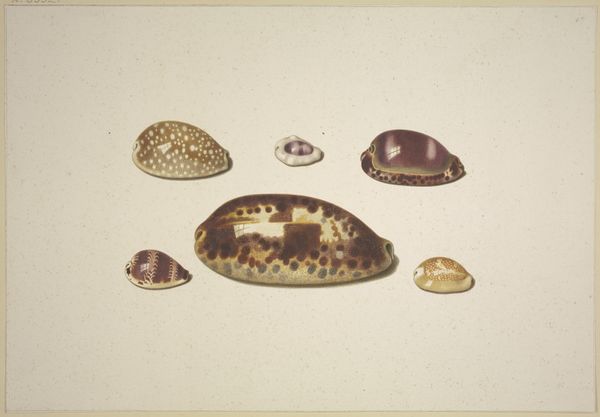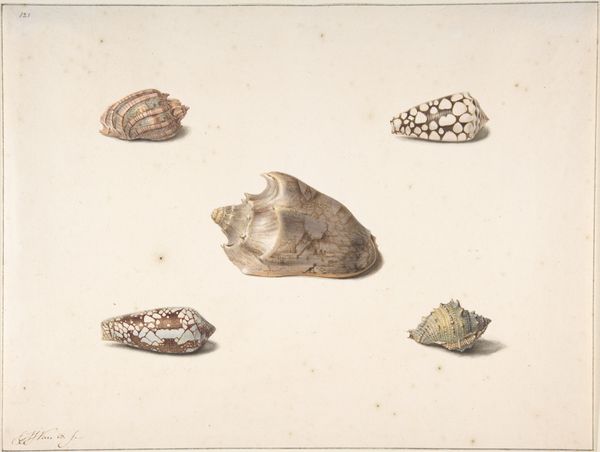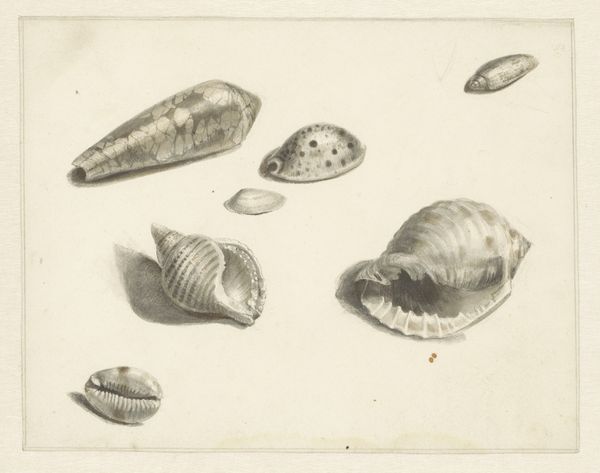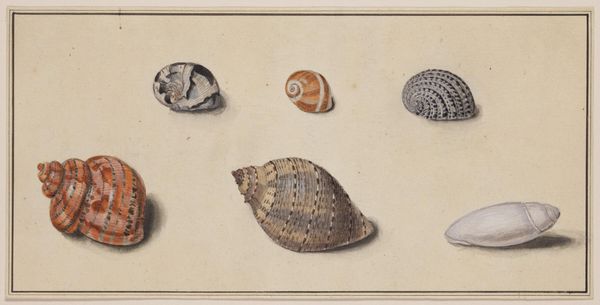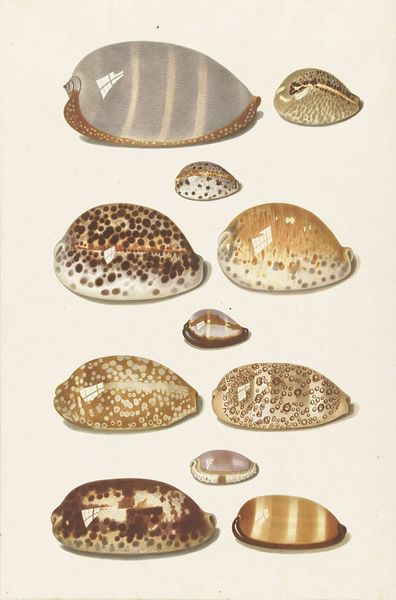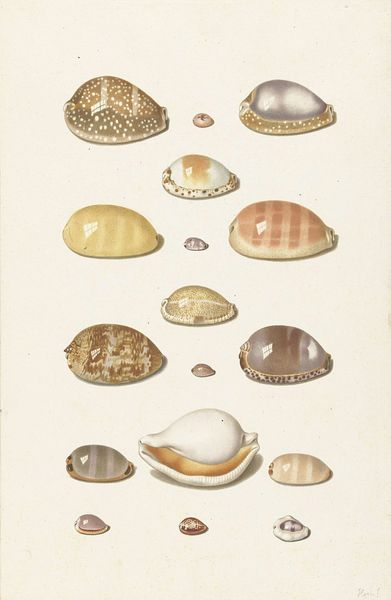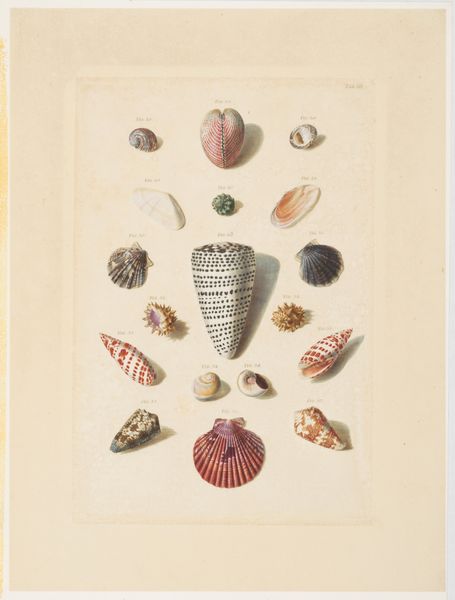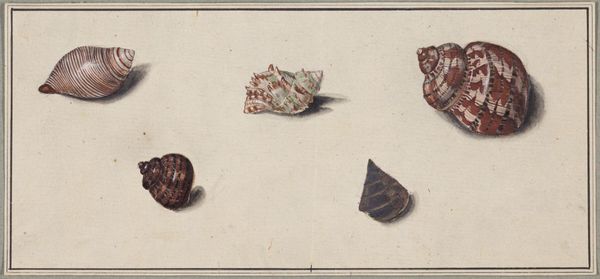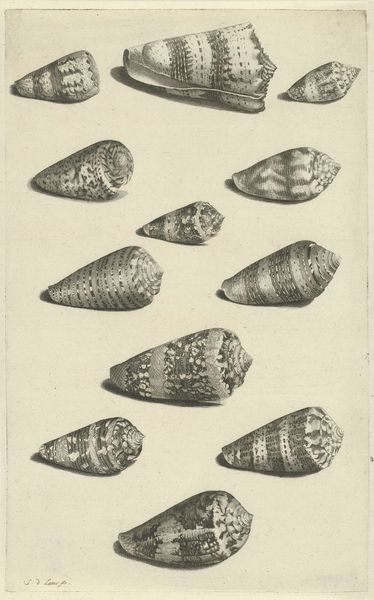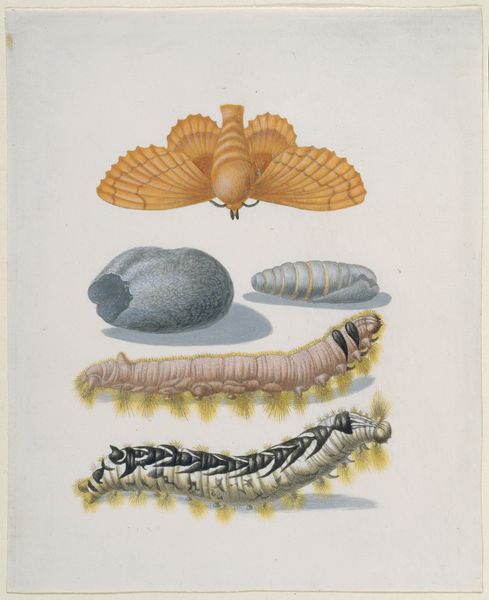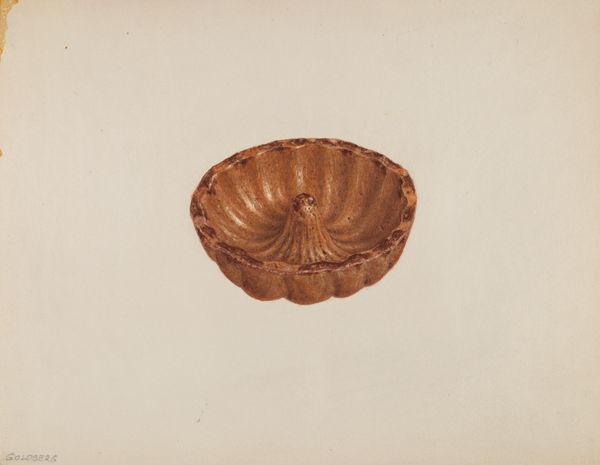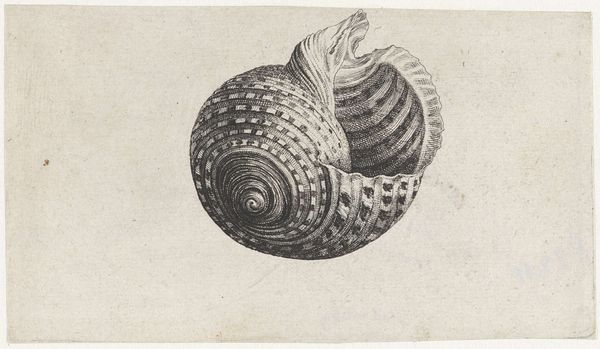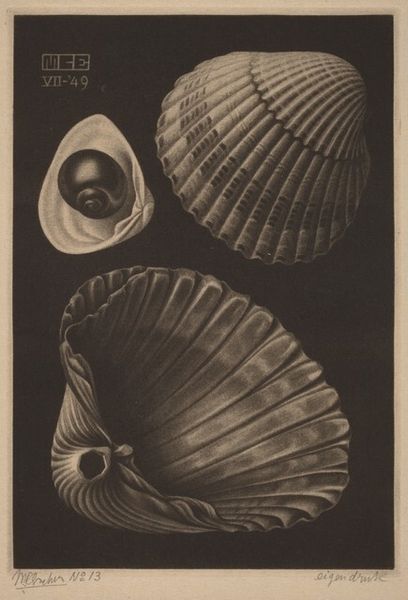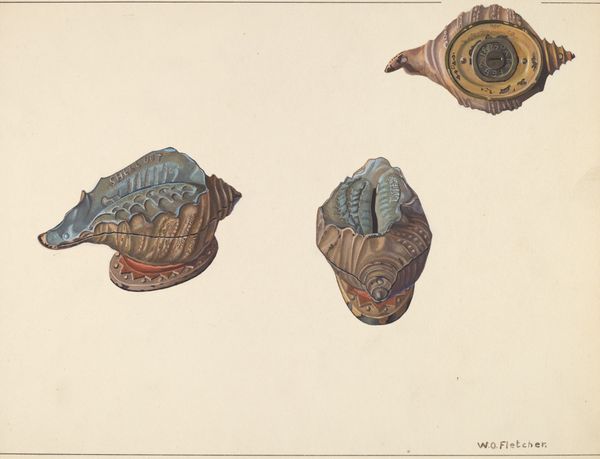
drawing, paper, watercolor
#
drawing
#
netherlandish
#
water colours
#
baroque
#
paper
#
watercolor
#
genre-painting
#
watercolor
#
realism
Copyright: Public Domain
Curator: What we have here is a striking example of genre-painting from an artist named D. Hogh, its title "Sechs Muscheln, dabei eine große gelbe," which translates to "Six Shells, including a large yellow one." It is currently held in the Städel Museum collection. Editor: My first impression is the serenity. The arrangement is simple, and the light palette creates an atmosphere of peaceful observation. There is very little tonality or sharp variation. The edges of each shell are precisely rendered; how are we to see that form when each object sits evenly with little definition against the field? Curator: Considering its genre-painting classification, there is an interesting interplay of natural history and artistic skill, perhaps as evidence of colonialism's cultural obsession and classification as evidence of power structures. Are these exotic shells and their arrangement speaking to a collection, and perhaps to global trade? The fact that these shells have landed upon a page feels potent. Editor: Absolutely. I can also see echoes of Dutch still life in the careful observation of textures and light on each shell surface. This rendering focuses closely upon an individual shape of nature; each possesses these small repeating details. Look closely at the variation in pattern and colour. Hogh builds form through variation in repeating, adjacent marks; Hogh carefully employs watercolour as a strategic process and arrangement of shape. Curator: In light of feminist theory, are we seeing that Hogh takes these beautiful shells that may wash upon shores – these traditionally gendered locations -- to instead imbue scientific authority within a domestic sphere? What impact does the artist have to take and isolate each item? How can this speak to ideas surrounding ownership, dispossession and privilege. Editor: Looking back at those compositional arrangements -- these varying patterns and sizes against an undefined, expansive neutral background creates an internal dynamism in balance with each adjacent figure, one that certainly speaks to Baroque ideals of beauty. In my analysis, it is here where formalism begins to offer meaning through the artist's chosen arrangement. Curator: Reflecting upon the artistic approach and the shells chosen here, what strikes me most is how collecting, cataloging, and ownership of even seemingly simple natural forms intertwine with the grand narratives of history and societal power. Editor: And what lingers for me is that visual tension achieved in balancing scientific scrutiny alongside an inherent formal appeal.
Comments
No comments
Be the first to comment and join the conversation on the ultimate creative platform.
